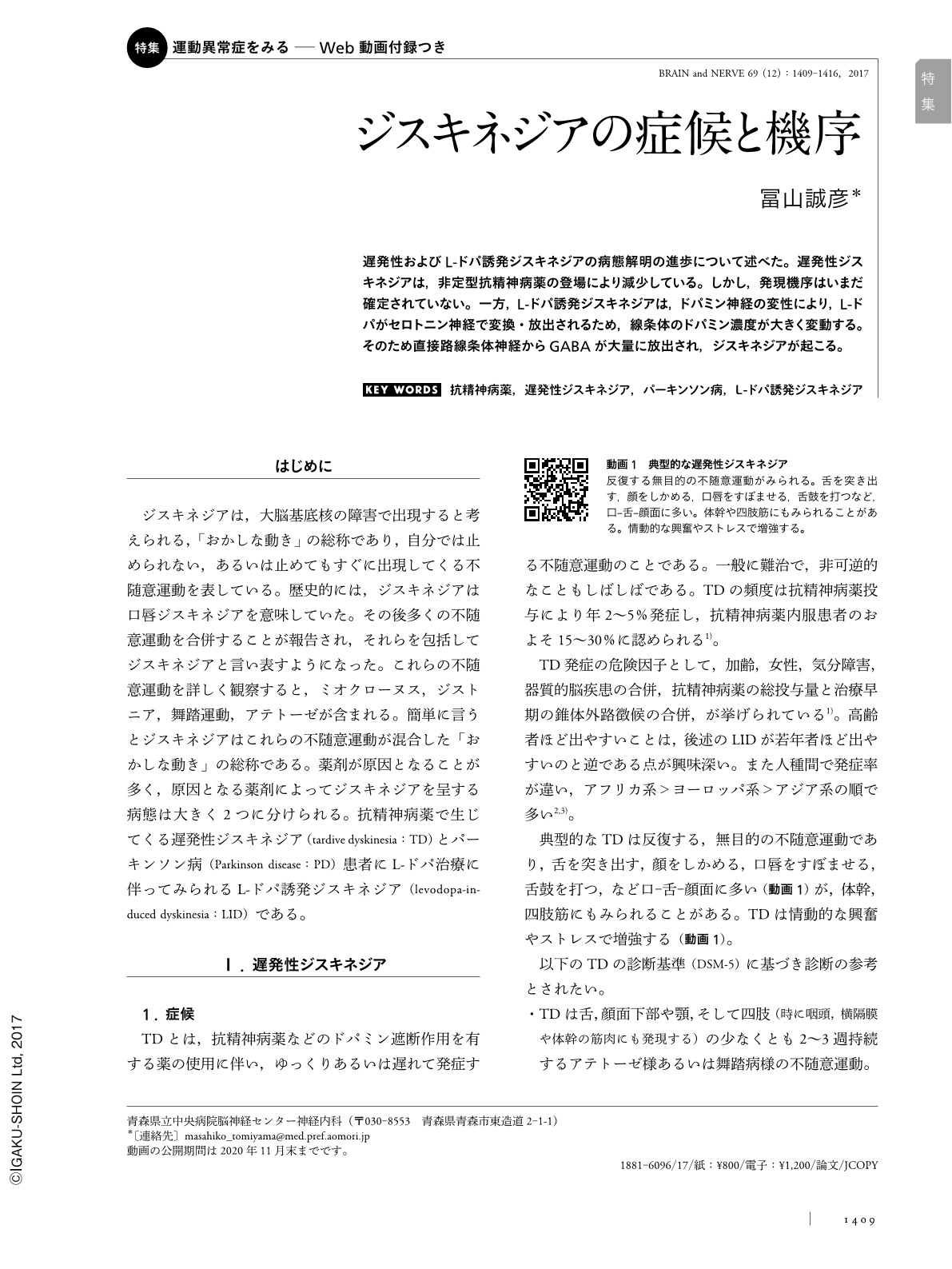Japanese
English
- 有料閲覧
- Abstract 文献概要
- 1ページ目 Look Inside
- 参考文献 Reference
遅発性およびL-ドパ誘発ジスキネジアの病態解明の進歩について述べた。遅発性ジスキネジアは,非定型抗精神病薬の登場により減少している。しかし,発現機序はいまだ確定されていない。一方,L-ドパ誘発ジスキネジアは,ドパミン神経の変性により,L-ドパがセロトニン神経で変換・放出されるため,線条体のドパミン濃度が大きく変動する。そのため直接路線条体神経からGABAが大量に放出され,ジスキネジアが起こる。
*本論文中に掲載されている二次元コード部分をクリックすると,付録動画を視聴することができます(公開期間:2020年11月末まで)。
Abstract
Symptomatic characteristics and recent advances in understanding the pathophysiology of tardive dyskinesias and levodopa-induced dyskinesias were reviewed. After the advent of atypical antipsychotics, tardive dyskinesias became less frequent, at least as observed during a short-term follow up. The dopamine supersensitivity hypothesis stating that blockade of dopamine D2 receptors by antipsychotics makes D2 receptors more sensitive to dopamine, has long been proposed. However, the true mechanisms remain to be determined. Three types of levodopa-induced dyskinesias—peak-dose dyskinesia, off-period dystonia and diphasic dyskinesia—were described. The pathomechanisms of peak-dose dyskinesia have been demonstrated in recent years. The priming process involved in peak-dose dyskinesia is as follows: (1) marked fluctuation of dopamine concentration occurs in the synaptic clefts of striatal neurons after each levodopa dose, (2) cortico-striatal synapses of the striatal spiny neurons of the direct pathway become supersensitive, (3) there is increased production of GABA in the spiny neurons and excessive storage of GABA in their axon terminals, (4) following this, each dose of levodopa causes excessive release of GABA into the output nuclei of the basal ganglia, resulting in abnormal firing of the neurons in these nuclei. Thus, peak-dose dyskinesia occurs after levodopa dose.

Copyright © 2017, Igaku-Shoin Ltd. All rights reserved.


